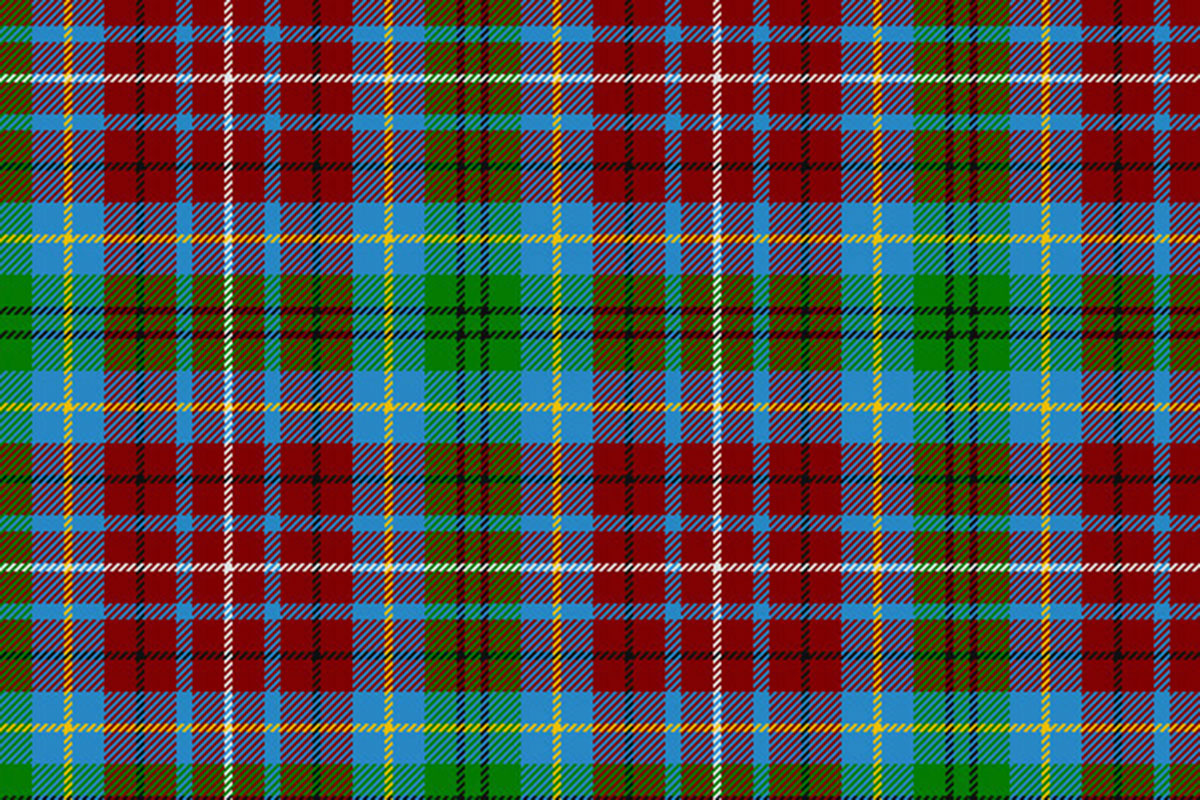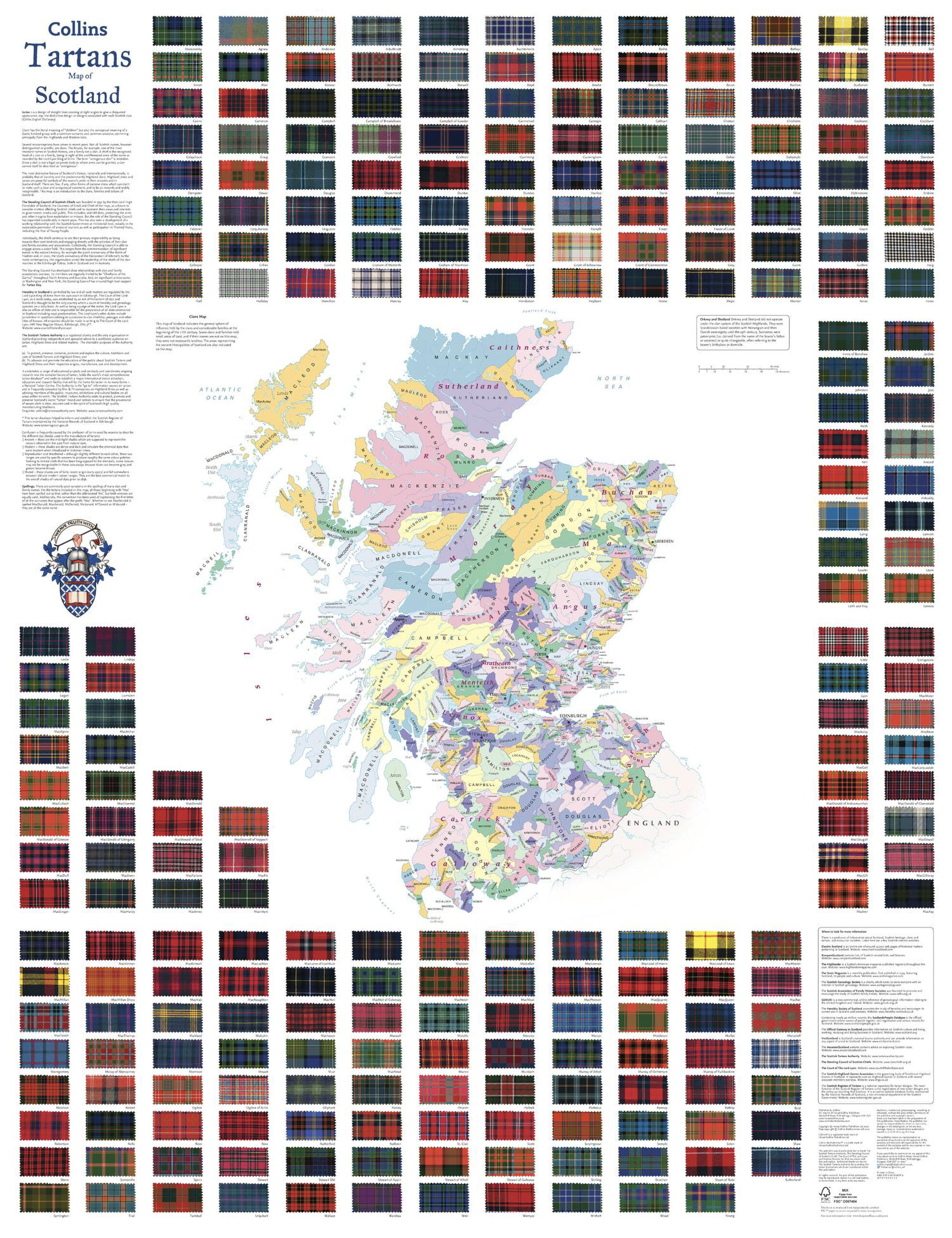Tartan has without doubt become one of the most important symbols of Scotland and Scottish Heritage.
With the Scots National identity probably greater than at any time in recent centuries, the potency of Tartan as a symbol cannot be understated. However, it has also created a great deal of romantic fabrication, controversy and speculation into its origins, name, history and usage as a Clan or Family form of identification.
Tartan is a woven material, generally of wool, having stripes of different colours and varying in breadth. The arrangement of colours is alike in warp and weft – that is, in length and width – and when woven, has the appearance of being a number of squares intersected by stripes which cross each other; this is called a ‘sett.’
click to enlarge
BC Tartan

The information for the “British Columbia” tartan is held within The Scottish Register of Tartans.
The tartan was designed by Earl K Ward of Victoria in 1967 as part of the 1966-67 centennial celebrations marking the creation of the province as one colony. The tartan was recorded in the Lyon Court Books (LCB 18) on 8th January 1969. It was officially adopted as the provincial tartan in 1974 through the British Columbia Tartan Act.
The Pacific Dogwood is the official flower of the province and is represented by white in the tartan. Green is for the BC forests. Blue is for the Pacific Ocean, red is for Canada’s national emblem of the maple leaf and gold is for the sun and the crown in the provincial flag.
In BC, the White Spot Pipe Band and Highland Dancers proudly wear the BC Tartan as its official band kilt.














